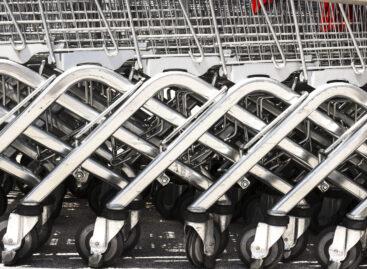Tamás Kozák: Government price controls are not a solution to inflation
Market processes in retail are increasingly coming into the spotlight, especially due to state price controls and inflationary effects. According to Tamás Kozák, Secretary General of the National Trade Association, unilateral state intervention is not a sustainable solution. The expert explained using an analogy: “If state intervention only affects retailers, it is like trying to regulate a heating system by only adjusting the thermostat, while the boiler continues to operate at full power,” we learn from the interview by Pénzcentrum.
The role of retail in inflationary processes

The development of food prices is a complex economic phenomenon, which is not only influenced by retail chains. According to the latest data from the Central Statistical Office (KSH), inflation in January was around 5%, while the increase in food prices did not exceed the rate of price increases in other sectors. For example, services showed a price increase of 9% on an annual basis. Nevertheless, food prices receive special attention, as they account for 25-30% of household spending.
Although the government expects retail chains to reduce prices, experts say that market mechanisms already create a highly competitive environment. Stores take action on a daily basis to maintain customer loyalty, and both international and domestic chains take advantage of this strong competition.
The situation of smaller stores and the risks of state intervention
One of the biggest problems in retail is the competitive disadvantage of smaller stores. State price regulations primarily encourage large chains to operate more efficiently, while smaller stores do not have the opportunity to reduce costs or offer promotions on a scale similar to those of department store chains. In the long run, this threatens to drive smaller stores out of the market, as they cannot compete with larger players.
Supplier prices are also a significant factor in pricing. Many people wonder why retailers are not absorbing the cost increase, but a significant portion of food chains are losing money or producing declining results. In Hungarian food retail, around 5,000 businesses sell in 30,000 stores, while some supplier markets are much more concentrated, which limits retailers’ room for maneuver.
Related news
Another sales tax is the SZÉP card transaction fee in retail
🎧 Hallgasd a cikket: Lejátszás Szünet Folytatás Leállítás Nyelv: Auto…
Read more >According to domestic manufacturing, distribution and trading companies, a possible increase in EPR fees next year could have an inflationary effect.
🎧 Hallgasd a cikket: Lejátszás Szünet Folytatás Leállítás Nyelv: Auto…
Read more >OKSZ calls for a reduction in public charges for the SZÉP card
🎧 Hallgasd a cikket: Lejátszás Szünet Folytatás Leállítás Nyelv: Auto…
Read more >Related news
Christmas shock in commerce: for the first time, we can pay with bank cards in fewer places
🎧 Hallgasd a cikket: Lejátszás Szünet Folytatás Leállítás Nyelv: Auto…
Read more >Hungarian Confectionery Manufacturers Association: trends in 2025 and prospects for 2026
🎧 Hallgasd a cikket: Lejátszás Szünet Folytatás Leállítás Nyelv: Auto…
Read more >Most grocery chains will be open until noon on December 24th
🎧 Hallgasd a cikket: Lejátszás Szünet Folytatás Leállítás Nyelv: Auto…
Read more >






